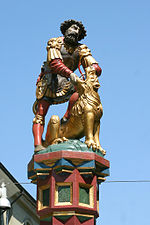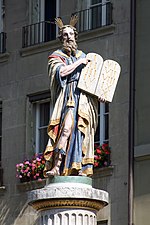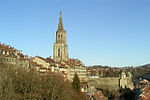Old City (Bern)

The Old City (German: Altstadt) is the medieval city center of Bern, Switzerland. Built on a narrow hill bordered on three sides by the river Aare, its compact layout has remained essentially unchanged since its construction during the twelfth to the fifteenth century. Despite a major fire in 1405, after which much of the city was rebuilt in sandstone, and substantial construction efforts in the eighteenth century, Bern's old city has retained its medieval character. The Old City is home to Switzerland's tallest minster as well as other churches, bridges and a large collection of Renaissance fountains. In addition to many historical buildings, the seats of the federal, cantonal and municipal government are also situated in the Old City. It is a UNESCO Cultural World Heritage Site since 1983 due to the compact and generally intact medieval core and is an excellent example of incorporating the modern world into a medieval city. Numerous buildings in the Old City have been designated as Swiss Cultural Properties of National Significance, as well as the entire Old City.
Excerpt from the Wikipedia article Old City (Bern) (License: CC BY-SA 3.0, Authors, Images).Old City (Bern)
Kramgasse, Bern
Geographical coordinates (GPS) Address Nearby Places Show on map
Geographical coordinates (GPS)
| Latitude | Longitude |
|---|---|
| N 46.948055555556 ° | E 7.4502777777778 ° |
Address
Kramgasse 40
3011 Bern (Stadtteil I)
Bern, Switzerland
Open on Google Maps










